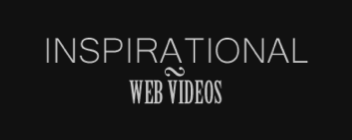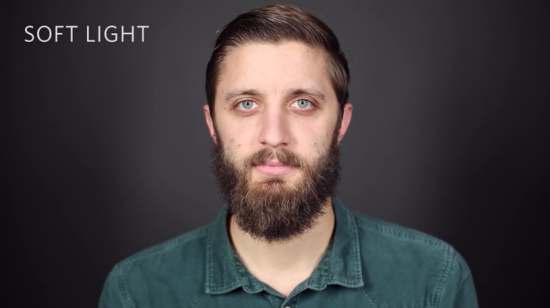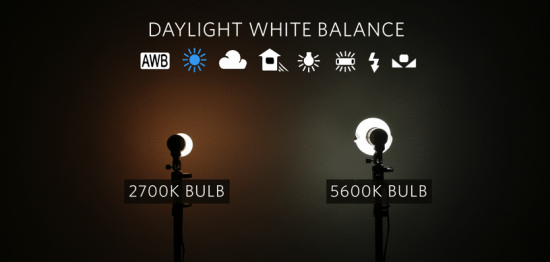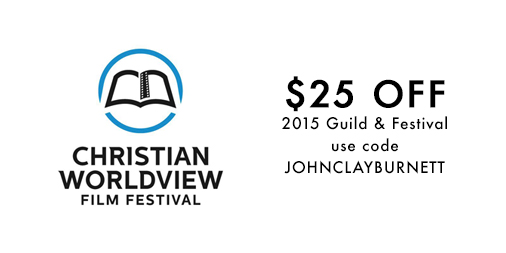
(Article Source)
- - - - - - -
(Editor’s note [and by "editor" I mean "me" (Josh Porter)]: Though the over-arching message of this rant is sincere, the curmudgeonliness and vitriol exist for comedic purposes only. In other words: I’m not actually angry. It’s supposed to be funny. Because this is the internet, I have to specify.)
10. Thou shalt leave thy phone at the door
As we will further illustrate along the way, a movie cannot be experienced if you are not watching it. If you are checking in on social media and drafting texts throughout the film, you are not watching the film.
Is your attention span so horrifically decrepit that dedicating an hour and a half to flashing images and loud noises is simply too much to bear? Is one screen simply not enough to satisfy your insatiable lust for media? Or has your life shriveled to such a depressing state of emptiness that the running time of a movie is unendurable without a peek at Instagram or Facebook?
Turn your phone off and put it down! Any life and death matter that can only come to you via your smartphone will be there when you turn it back on. It can wait a couple of hours. If you expect that your phone may absolutely demand your attention, what are you doing watching a movie?
A film is often a complicated and nuanced thing, even a lot of the bad ones. The fifteen seconds you spend staring down at twitter may provide a pivotal glimpse into the plot that drastically alters the trajectory of the entire story, but you just missed it because you needed to see a photo of your friend’s latté? You don’t care about this movie. Why are you watching it?
Not to mention the fact that your glowing screen and the twitching blur of your thumbs is distracting me. Now I can’t enjoy the movie. I’m no longer fully immersed because of your carelessness! Turn off your phone!
09. Thou shalt not commentate
I bypassed the commentary track from the director himself, why in the world do I need a running commentary from you? Virtually all the information in the world is available to me (after the movie) via this thing called the Internet. I don’t care how exciting it is for you to possess the inside knowledge, I don’t want director cameos pointed out by you, I don’t need to hear the urban myth about the light that fell on the grip, I don’t want to know about how it’s different from the book, I just want to watch the dang movie.
My suspension of disbelief is upheld by a magical—albeit fragile—thread when I come before the silver screen. I mean, don’t get me wrong, I probably indulge in pointless movie trivia more than a dozen of the average joes, but I don’t do it while the movie is playing.
Be quiet! There’s a movie on!
And for the love of God, don’t recite your favorite lines in tandem with the actors.
08. Thou shalt not critique
I don’t even care what professional critics have to say in major publications about movies, why should I hear from you? Every time you point out how fake a visual effect looks, every time you groan and grunt at what you perceive to be holes in the plot, every time you laugh at scenes intended to scare, you shatter the illusion the movie is meant to create!
I know it’s not real dangit. I’m trying to, in a sense, pretend like it is in order to immerse myself in the movie’s story. I want to be scared when the movie wants me to be scared and I want to be caught up in the plot when the movie aims to make it so. That’s what enjoying fiction is all about! I’m almost thirty years old, it’s hard enough to get my mode going good enough to believe the Avengers can communicate with one another when there are clearly no comm devices in their ears, I sure as heck can’t pretend when you sigh dramatically and point it out to me.
07. Thou shalt not forsake the viewing
Oh, you have to pee? Really? You didn’t realize this when we hit play? You can’t possibly last another half hour? Please, by all means, get up and walk past me at the most dramatic, crucial and/or terrifying moment in the film. And wait, what’s that? You don’t want us to pause it for you? Why the heck not? Because you don’t care about movies.
Use the bathroom, changeover your laundry, get a glass of water, etc. before or after the movie has ended but never during it. If you don’t watch the movie, you don’t watch the movie. I know you aren’t answering your phone, because you turned it off before the movie started, right?
06. Thou shalt not conversate
Shut up. Both of you. The movie requires silence to cast its wonderful illusory magic spell on us. Your audible conversation reminds me that it is not actually a long time ago in a galaxy far, far away. It’s actually here and now, next to two yahoos talking about where they’re going for dinner.
05. Thou shalt not divide thy focus
I thought mentioning the phone would be enough, but clearly it was not. If you are reading a book, poking around on your laptop, thumbing through a magazine or doing anything other than watching the movie, then you are—by definition—not watching the movie. And if you’re not watching the movie, what the heck are you doing here?
04. Thou shalt react respectfully
That scene was funny, so go ahead and laugh. And yes, this scene is terrifying, so a gasp is appropriate. You know what, I appreciate that you’re invested in the movie. Okay… That’s enough. Wait, what did that character just say? I couldn’t hear because the chump next to me is still laughing.
03. Remember the viewing atmosphere, to keep it holy
Ahhh the movie atmopshere. What a wonderful thing. The lights go down, all distractions are put away, the volume is turned up, and everyone sits still and stops talking while we venture into the fictional world that the movie creates.
If only it were always so.
When you get up, walk around, fidget, make a sandwich in the kitchen, switch on a lamp, etc. you destroy the magic. You destroy it. And maybe the magic isn’t important to you, buster, but it sure as heck is important to me.
02. If the movie has not been properly viewed, thou waiveth thy right to any opinion on said movie
So you didn’t like the movie? Is that what you’re saying? I’m curious about this assessment, because, if I recall, while the movie was playing you were looking at your phone, conversing with your friends and getting up to pee. Why, you didn’t really see the movie at all. As such, you are allowed no opinion about the movie whatsoever.
After all, the film’s important twist was revealed while you were staring down at Instagram. You missed the funniest line because you were talking over it, and you didn’t see that one guy die because you were in the bathroom. You didn’t see the movie.
Oh, you saw most of it, you say? You got the gist, you say? Hilarious. I’d like to see you skim a handful of chapters from Crime and Punishment and then pass a test on it.
01. All thoughts on the movie from someone who has seen the movie are spoilers. THOU SHALT NEVER EVER SPEAK SPOILERS.
“The ending blew my mind!”
“It was actually really sad.”
“I didn’t like the way it ended.”
I am perpetually flabbergasted by not only the lack of sensitivity so many folks have toward what we call “spoilers”—informative tidbits that spoil the plot and/or experience of a film—but also the understanding of what constitutes a spoiler in the first place. There are two types: direct and indirect. A direct spoiler is obvious, “The protagonist dies at the end.” An indirect spoiler however, is much broader, “It was actually really sad.” If you tell me the movie is “actually really sad” then I enter into the experience anticipating something tragic, the movie can’t possibly surprise me with it. As a result, the emotional reaction the movie intends to evoke is forever lost.
“Oh come on!” they groan. “I didn’t say anything!” they whine.
“You’ll never see the ending coming!” Actually, now I will. I’ll sit through the entire movie fully prepared for some twist, fighting the urge to unravel it in my mind as it approaches, and the surprise falls flat. A twist ending depends on the impact, not just the ramifications of the impact. If I’m told that the ending is a surprise, even if the contents of said surprise are not thoroughly unpacked, the surprise ceases to be a surprise at all. It becomes an inevitability.
Imagine, if you will, that I’m attending a wedding ceremony. The mood is thick. The lighting, decor, ambience are all perfectly in place. Just as the vows are about to be exchanged, I stand up and begin to shout gibberish at the top of my lungs for about fifteen seconds. After the initial shock begins to fade, the ceremony continues. That specific moment in time and what it means for everyone involved will be forever marked by the idiot who stood up and shouted for no good reason. They could hold another ceremony if they so desired, but it’s really too late, that important occasion can never be recreated. Now, imagine that when the offended parties approach me in regards to my strange behavior I simply say, “So what? You still got married. After all, it’s just a party, it’s not like it’s the end of the world.”
Not every movie is magical, but even bad movies require a certain level of investment to even allow for the possibility of magic to take place. Most people think of themselves as movie fans, but in reality, they treat movies the way most casual listeners treat music: as something to be enjoyed in passing, perhaps even in the background, with no serious commitment. After all, they think, it’s just a movie. So who in the world are you to care so much if they don’t?
For others, movies are an incredible doorway to inspiration, humanity, philosophy, theology, art, culture… Movies, though only stories created with actors and cameras, can offer a once in a lifetime experience that may resonate with us for as long as we live. We realize that life doesn’t begin and end with movies. We could live without them. We don’t get our identity from movies, we just like them a lot. They matter to us.
And they matter to all who keep these commandments.
- - - - - - -
(Article Source)








 1 Comment
1 Comment


 What: HMI lights (Hydrargyrum medium-arc iodide… yeah, just remember HMI and you’re fine!) are a standard in film and television. HMI lamps come in all sizes usually as low as 200 watts all the way up to 24,000. They require a ballast to operate and some of the low wattage lamps can even run on Edison power (home/office plugs) but most of them require generators or high amp circuits. They are one of the most expensive genre of lights so often you will rent these for your production.
What: HMI lights (Hydrargyrum medium-arc iodide… yeah, just remember HMI and you’re fine!) are a standard in film and television. HMI lamps come in all sizes usually as low as 200 watts all the way up to 24,000. They require a ballast to operate and some of the low wattage lamps can even run on Edison power (home/office plugs) but most of them require generators or high amp circuits. They are one of the most expensive genre of lights so often you will rent these for your production. What: Tungsten or Halogen lamps have been used since the birth of cinema because they use incandescent bulbs to generate the lumens and incandescent lighting has been around since the late 1800’s. Just like a typical light bulb in your house, tungsten lighting is a native 3200k-3800k temperature and can run on Edison power. Larger lamps requiring more wattage (typically 2k +) will require generators or larger amp circuits. Tungsten lamps come in a many forms so they are extremely diverse as well as low cost both in purchase and rentals.
What: Tungsten or Halogen lamps have been used since the birth of cinema because they use incandescent bulbs to generate the lumens and incandescent lighting has been around since the late 1800’s. Just like a typical light bulb in your house, tungsten lighting is a native 3200k-3800k temperature and can run on Edison power. Larger lamps requiring more wattage (typically 2k +) will require generators or larger amp circuits. Tungsten lamps come in a many forms so they are extremely diverse as well as low cost both in purchase and rentals. What: Florescent lamps uses bulbs that are mercury-vapor filled and is illuminated when an electrical charge is omitted causing the vapor to glow inside the bulb housing. You often see them in office buildings and in modern times being used in the home. For film and video production they are used to give off a soft light and generate relatively very low heat and consume very low amounts of electricity. For this reason they are very desirable for production. Fluorescents are somewhat inexpensive to own and very affordable to rent.
What: Florescent lamps uses bulbs that are mercury-vapor filled and is illuminated when an electrical charge is omitted causing the vapor to glow inside the bulb housing. You often see them in office buildings and in modern times being used in the home. For film and video production they are used to give off a soft light and generate relatively very low heat and consume very low amounts of electricity. For this reason they are very desirable for production. Fluorescents are somewhat inexpensive to own and very affordable to rent. What: LED lighting has come onto the scene with a vengeance. Above all the other types of lighting I’m mentioning, LED is advancing at a higher rate than any other. LED (Light-Emitting Diode) originally was used for infrared lighting but in the 1960’s began being used for visible light in electronics and small devices. Today they are now being used in film and tv in many ways, even as source lighting. LED lamps, like tungsten and florescent lights can be dimmed but they go one step further. Some LED lights can also change color temperature with simple adjustment. This creates a wider range of use for LED lighting in film and video. Many rental houses are just now warming up to LED lighting so you may not find a huge selection but like fluorescents they affordable to own and rent. With the added flexibility of use over other types of lights, the added cost makes them worth the investment.
What: LED lighting has come onto the scene with a vengeance. Above all the other types of lighting I’m mentioning, LED is advancing at a higher rate than any other. LED (Light-Emitting Diode) originally was used for infrared lighting but in the 1960’s began being used for visible light in electronics and small devices. Today they are now being used in film and tv in many ways, even as source lighting. LED lamps, like tungsten and florescent lights can be dimmed but they go one step further. Some LED lights can also change color temperature with simple adjustment. This creates a wider range of use for LED lighting in film and video. Many rental houses are just now warming up to LED lighting so you may not find a huge selection but like fluorescents they affordable to own and rent. With the added flexibility of use over other types of lights, the added cost makes them worth the investment.



